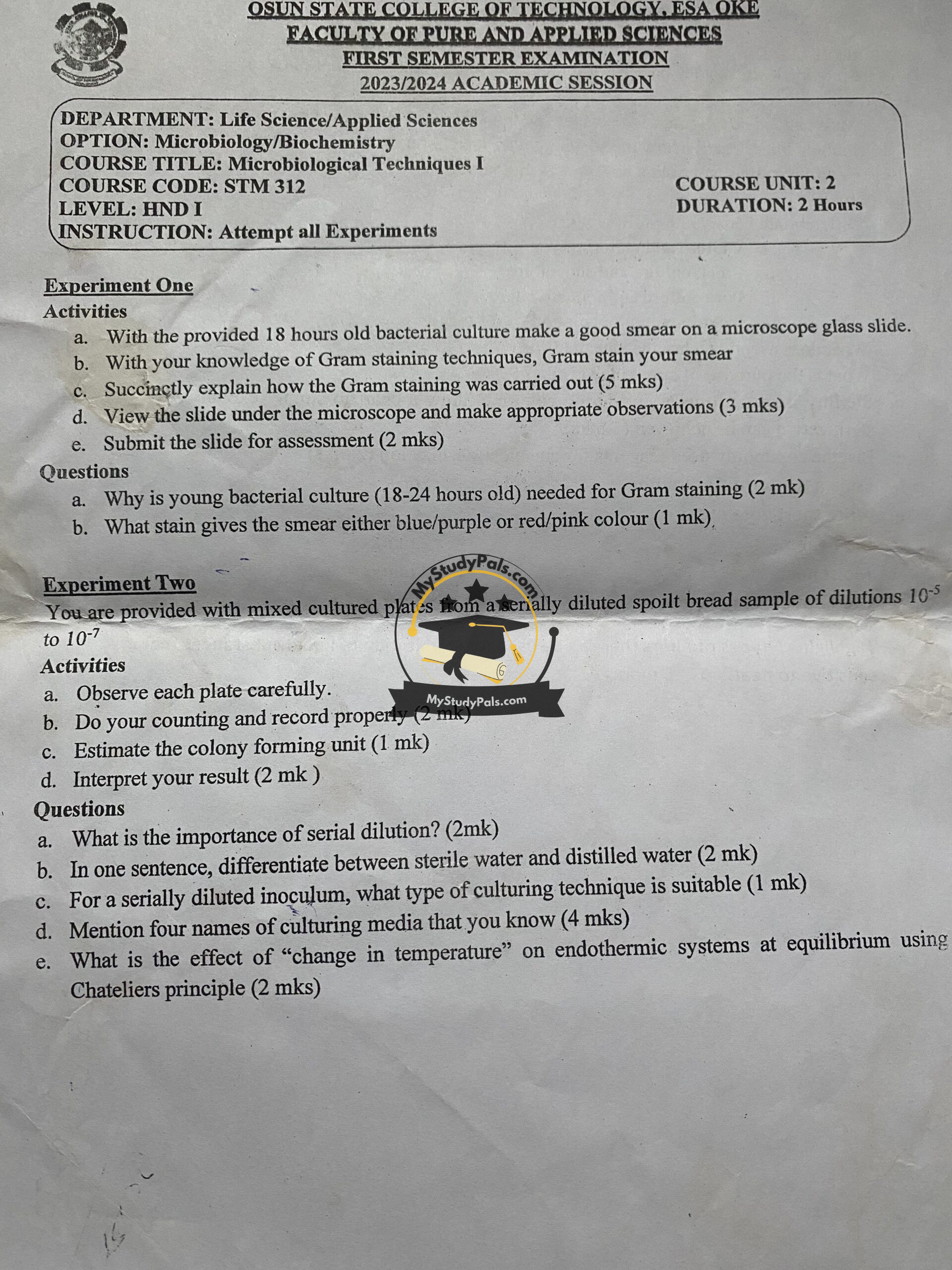ANWSER
Experiment One
Questions and Answers
Question 1:
Answer: Young bacterial culture (18-24 hours old) is needed for Gram staining because older cultures may have degraded cell walls, leading to incorrect staining results. Fresh cultures ensure accurate differentiation between Gram-positive and Gram-negative bacteria.
Question 2:
Answer: The Gram stain gives the smear either a blue/purple color for Gram-positive bacteria or a red/pink color for Gram-negative bacteria.
Experiment Two
Questions and Answers
Question 3:
Answer: The importance of serial dilution is to reduce the concentration of bacterial cells in a sample, making it easier to count colonies and determine the colony-forming units (CFU) accurately.
Question 4:
Answer: Sterile water is free from any microorganisms, whereas distilled water is purified to remove impurities but may not necessarily be sterile.
Question 5:
Answer: For a serially diluted inoculum, the spread plate technique is the most suitable culturing method, as it allows for the isolation and enumeration of individual bacterial colonies.
Question 6:
Answer: Four examples of culturing media include:
- Nutrient agar
- MacConkey agar
- Blood agar
- Sabouraud dextrose agar
Question 7:
Answer: According to Le Chatelier’s principle, an increase in temperature shifts an endothermic reaction toward the product side (favoring forward reaction), while a decrease in temperature shifts it toward the reactant side (favoring reverse reaction).


